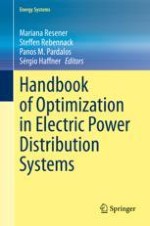This handbook gathers state-of-the-art research on optimization problems in power distribution systems, covering classical problems as well as the challenges introduced by distributed power generation and smart grid resources. It also presents recent models, solution techniques and computational tools to solve planning problems for power distribution systems and explains how to apply them in distributed and variable energy generation resources. As such, the book therefore is a valuable tool to leverage the expansion and operation planning of electricity distribution networks.
